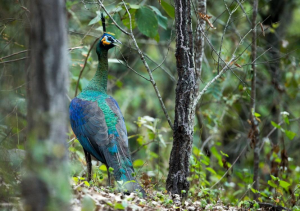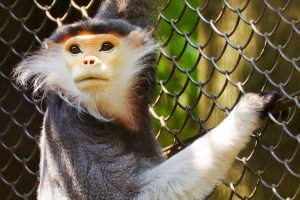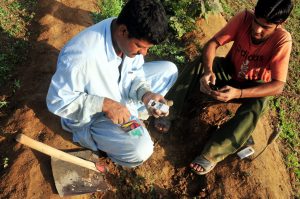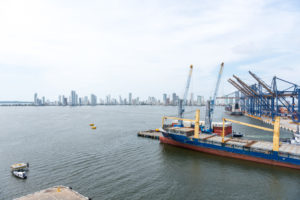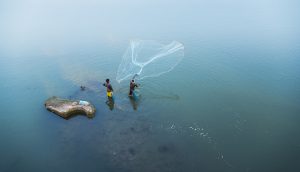The worldwide effort to return islands to their original wildlife, by eradicating rats, pigs, and other invasive species, has been one of the great environmental success stories of our time. Rewilding has succeeded on hundreds of islands, with beleaguered species surging back from imminent extinction, and dwindling bird colonies suddenly blossoming across old nesting grounds.
But these restoration campaigns are often massively expensive and emotionally fraught, with conservationists fearful of accidentally poisoning native wildlife, and animal rights activists having at times fiercely opposed the whole idea. So what if it were possible to rid islands of invasive species without killing a single animal? And at a fraction of the cost of current methods?
That’s the tantalising – but also worrisome – promise of synthetic biology, a Brave New World sort of technology that applies engineering principles to species and to biological systems. It’s genetic engineering, but made easier and more precise by the new gene editing technology called CRISPR, which ecologists could use to splice in a DNA sequence designed to handicap an invasive species, or to help a native species adapt to a changing climate. “Gene drive”, another new tool, could then spread an introduced trait through a population far more rapidly than conventional Mendelian genetics would predict.
Synthetic biology, also called synbio, is already a multi-billion dollar market, for manufacturing processes in pharmaceuticals, chemicals, biofuels, and agriculture. But many conservationists consider the prospect of using synbio methods as a tool for protecting the natural world deeply alarming. Jane Goodall, David Suzuki, and others have signed a letter warning that use of gene drives gives “technicians the ability to intervene in evolution, to engineer the fate of an entire species, to dramatically modify ecosystems, and to unleash large-scale environmental changes, in ways never thought possible before.” The signers of the letter argue that such a “powerful and potentially dangerous technology … should not be promoted as a conservation tool.”
Environmentalists and synthetic biology engineers need to overcome what now amounts to mutual ignorance, a conservationist says.
On the other hand, a team of conservation biologists writing early this year in the journal Trends in Ecology and Evolution ran off a list of promising applications for synbio in the natural world, in addition to island rewilding:
-
Transplanting genes for resistance to white nose syndrome into bats, and for chytrid fungus into frogs and other amphibians.
-
Giving corals that are vulnerable to bleaching carefully selected genes from nearby corals that are more tolerant of heat and acidity.
-
Using artificial microbiomes to restore soils damaged by mining or pollution.
-
Eliminating populations of feral cats and dogs without euthanasia or surgical neutering, by producing generations that are genetically programmed to be sterile, or skewed to be overwhelmingly male.
-
And eradicating mosquitoes without pesticides, particularly in Hawaii, where they are highly destructive newcomers.
Kent Redford, a conservation consultant and co-author of that article, argues that conservationists and synbio engineers alike need to overcome what now amounts to mutual ignorance. Conservationists tend to have limited and often outdated knowledge of genetics and molecular biology, he says. In a 2014 article in Oryx, he quoted one conservationist flatly declaring, “Those were the courses we flunked.” Stanford University’s Drew Endy, one of the founders of synbio, volunteers in turn that 18 months ago he had never heard of the IUCN – the International Union for Conservation of Nature – or its “Red List” of endangered species. “In engineering school, the ignorance gap is terrific,” he adds. “But it’s symmetric ignorance.”
At a major synbio conference he organised last month in Singapore, Endy invited Redford and eight other conservationists to lead a session on biodiversity, with the aim, he says, of getting engineers building the bioeconomy “to think about the natural world ahead of time … My hope is that people are no longer merely naïve in terms of their industrial disposition.”
Likewise, Redford and the co-authors of the article in Trends in Ecology and Evolution, assert that “it would be a disservice to the goal of protecting biodiversity if conservationists do not participate in applying the best science and thinkers to these issues.” They argue that “it is necessary to adapt the culture of conservation biologists to a rapidly-changing reality” – including the effects of climate change and emerging diseases. “Twenty-first century conservation philosophy,” the co-authors conclude, should “embrace concepts of synthetic biology, and both seek and guide appropriate synthetic solutions to aid biodiversity.”
Through “gene drive” technology, mice, rats or other invasive species can theoretically be eliminated from an island without killing anything.
The debate over “synthetic biodiversity conservation”, as the Trends in Ecology and Evolution authors term it, had its origins in a 2003 paper by Austin Burt, an evolutionary geneticist at Imperial College London. He proposed a dramatically new tool for genetic engineering, based on certain naturally occurring “selfish genetic elements,” which manage to propagate themselves in as much as 99 percent of the next generation, rather than the usual 50 percent. Burt thought that it might be possible to use these “super-Mendelian” genes as a Trojan horse, to rapidly distribute altered DNA, and thus “to genetically engineer natural populations.” It was impractical at the time. But development of CRISPR technology soon brought the idea close to reality, and researchers have since demonstrated the effectiveness of “gene drive”, as the technique became known, in laboratory experiments on malaria mosquitoes, fruit flies, yeast, and human embryos.
Burt proposed one particularly ominous-sounding application for this new technology: It might be possible under certain conditions, he thought, that “a genetic load sufficient to eradicate a population can be imposed in fewer than 20 generations.” And this is, in fact, likely to be the first practical application of synthetic biodiversity conservation in the field. Eradicating invasive populations is of course the inevitable first step in island rewilding projects.
The proposed eradication technique is to use the gene drive to deliver DNA that determines the gender of offspring. Because the gene drive propagates itself so thoroughly through subsequent generations, it can quickly cause a population to become almost all male and soon collapse. The result, at least in theory, is the elimination of mice, rats, or other invasive species from an island without anyone having killed anything.
“We are committed to a precautionary step-wise approach, with plenty of off-ramps, if it turns out to be too risky or not ethical.”
Research to test the practicality of the method – including moral, ethical, and legal considerations – is already under way through a research consortium of nonprofit groups, universities, and government agencies in Australia, New Zealand, and the United States. At North Carolina State University, for instance, researchers have begun working with a laboratory population of invasive mice taken from a coastal island. They need to determine how well a wild population will accept mice that have been altered in the laboratory.
“The success of this idea depends heavily,” according to gene drive researcher Megan Serr, “on the genetically modified male mice being ‘studs’ with the island lady mice … Will she want a hybrid male that is part wild, part lab?” Beyond that, the research programme needs to figure out how many modified mice to introduce to eradicate an invasive population in a habitat of a particular size. Other significant practical challenges will also undoubtedly arise. For instance, a study early this year in the journal Genetics concluded that resistance to CRISPR-modified gene drives “should evolve almost inevitably in most natural populations.”
Political and environmental resistance is also likely to develop. In an email, MIT evolutionary biologist Kevin Esvelt asserted that CRISPR-based gene drives are “not suited for conservation due to the very high risk of spreading” beyond the target species or environment. Even a gene drive system introduced to quickly eradicate an introduced population from an island, he added, “still is likely to have over a year to escape or be deliberately transported off-island. If it is capable of spreading elsewhere, that is a major problem.”
Even “a highly contained field trial on a remote island is probably a decade or so away,” said Heath Packard, of Island Conservation, a nonprofit that has been involved in numerous island rewilding projects and is now part of the research consortium. “We are committed to a precautionary step-wise approach, with plenty of off-ramps, if it turns out to be too risky or not ethical.” But his group notes that 80% of known extinctions over the past 500 or so years have occurred on islands, which are also home to 40% of species now considered at risk of extinction. That makes it important at least to begin to study the potential of synthetic biodiversity conservation.
Even if conservationists ultimately balk at these new technologies, business interests are already bringing synbio into the field for commercial purposes. For instance, a Pennsylvania State University researcher recently figured out how to use CRISPR gene editing to turn off genes that cause supermarket mushrooms to turn brown. The US Department of Agriculture last year ruled that these mushrooms would not be subject to regulation as a genetically modified organism because they contain no genes introduced from other species.
With those kinds of changes taking place all around them, conservationists “absolutely must engage with the synthetic biology community,” says Redford, “and if we don’t do so it will be at our peril.” Synbio, he says, presents conservationists with “a huge range of questions that no one is paying attention to yet.”
This article originally appeared on Yale Environment 360 and is republished here with permission.

